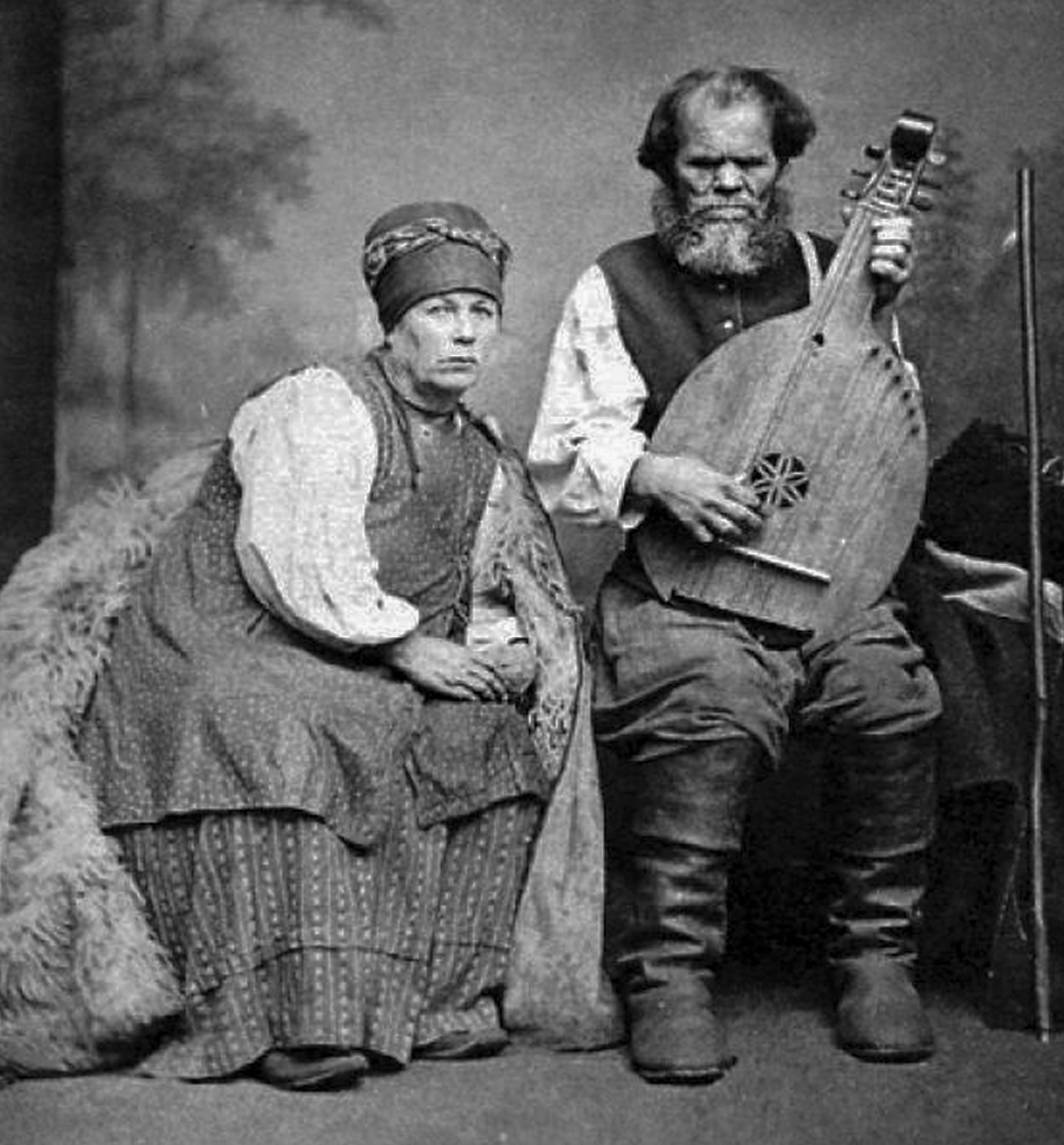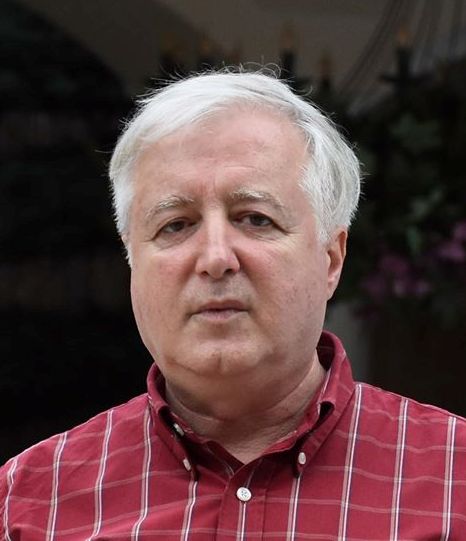Ukrainian Folk Music
Variety of Melodies
The more you listen to Ukrainian songs, the more you become convinced that these people are outstanding masters of melody. Beautiful Ukrainian tunes are woven into forms of polyphony both old and traditional as well as new and reworked, delighting the listener at home or abroad.
Despite its distinct identity, Ukrainian vocal music over the centuries has experienced some musical influence from its neighbors and, naturally, has itself influenced the musical culture of others. For example, in the districts bordering Ukraine, Ukrainian intonations were quite easily adopted by local Russians. The European musical system entered into Russian church music precisely through the influence of the Ukrainian chanting (part-singing) style. Ukrainians and Belarusians also have many songs in common.
Such a close connection of motifs is not surprising when talking about the roots of East Slavic music, which are linked to the territory of modern-day Ukraine. Historically, Kyivan Rus’ was the cradle of East Slavic culture.
Ukrainian folk singing is also distinguished by regional diversity. The original national style is particularly pronounced in the Central Dnieper region, where it is mainly sung with chest voice, while the Hutsul and Podolia regions are distinguished by a variety of sound-producing techniques. The intonations of Polesia, along the northern borders, are similar to those in Belarusian and Russian songs. It is interesting that songs from this area, with their sustained bass, differ quite significantly from the main Ukrainian national style. Folk musics from the Galicia and Volyn regions are also notable for their originality.
The musical folklore of the Carpathians and the Precarpathians, namely the musical dialects of the Hutsuls (sometimes with Romanian-Hungarian influences) and the Lemkos (with Polish-Slovak influences), add interesting “color” to the tones of Ukrainian folk songs, with their characteristic improvisational elements, ornamentation, and distinctive rhythms.
In general, as with many European countries, Ukrainian folk music is divided into two main layers: urban (relatively new) and rural (more ancient). The abundance of samples of rural, peasant folklore is remarkable. Ukrainian folklore has a large share of solo, skilled performers, known as kobzars or lirnyks. Urban music of an educated social class is also not uncommon.
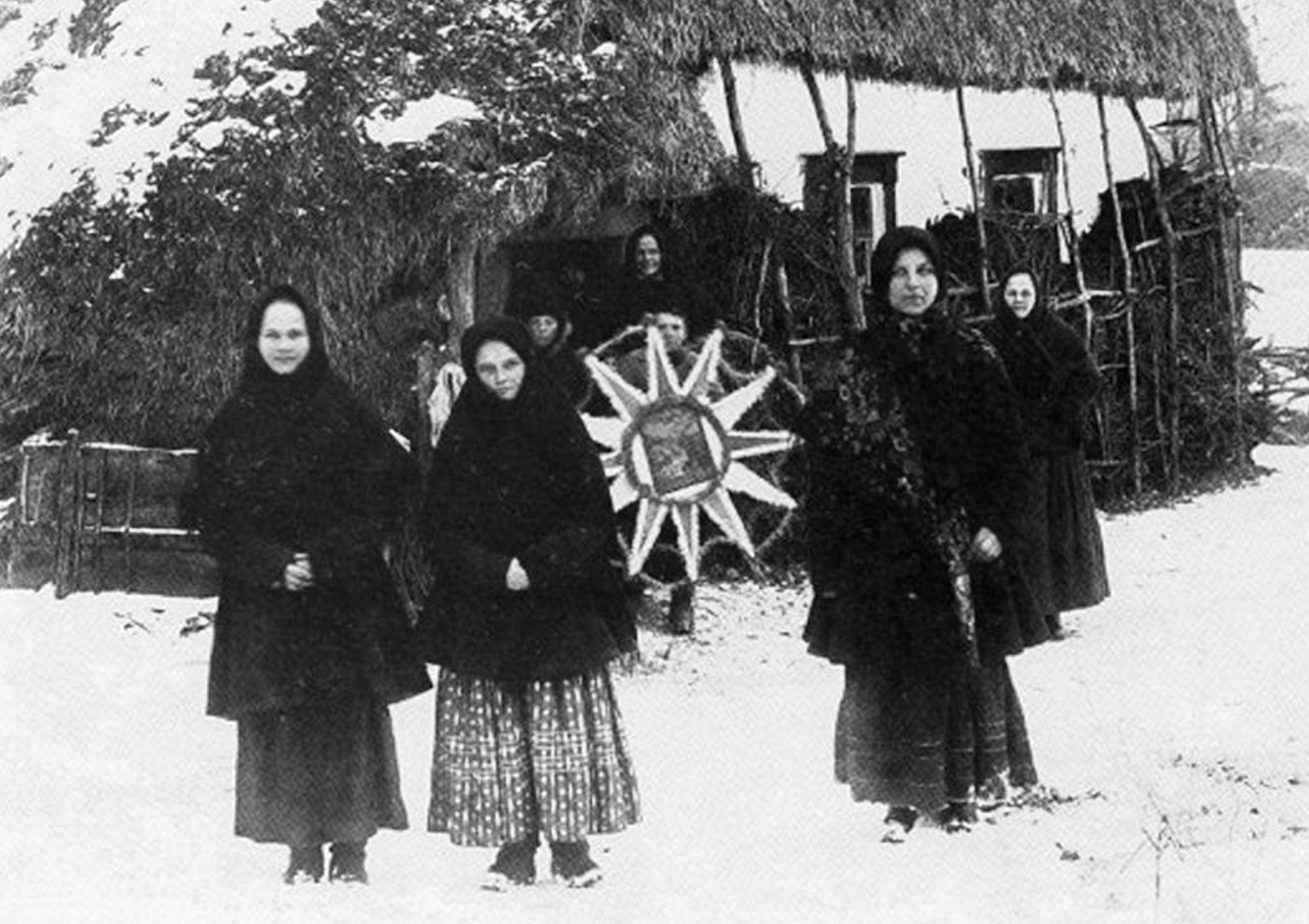
Kolyada
Archaic traces
Despite an ancient culture, traces of pagan and magical intonations are clearly recognizable in Ukrainian folk music. That is why such songs are characterized by archaic, simple intonations (such as Christmas and New Year’s carols and shchedryvka songs) and are easily picked up by children as well. It is mostly young women and men who participate in these ritual performances.
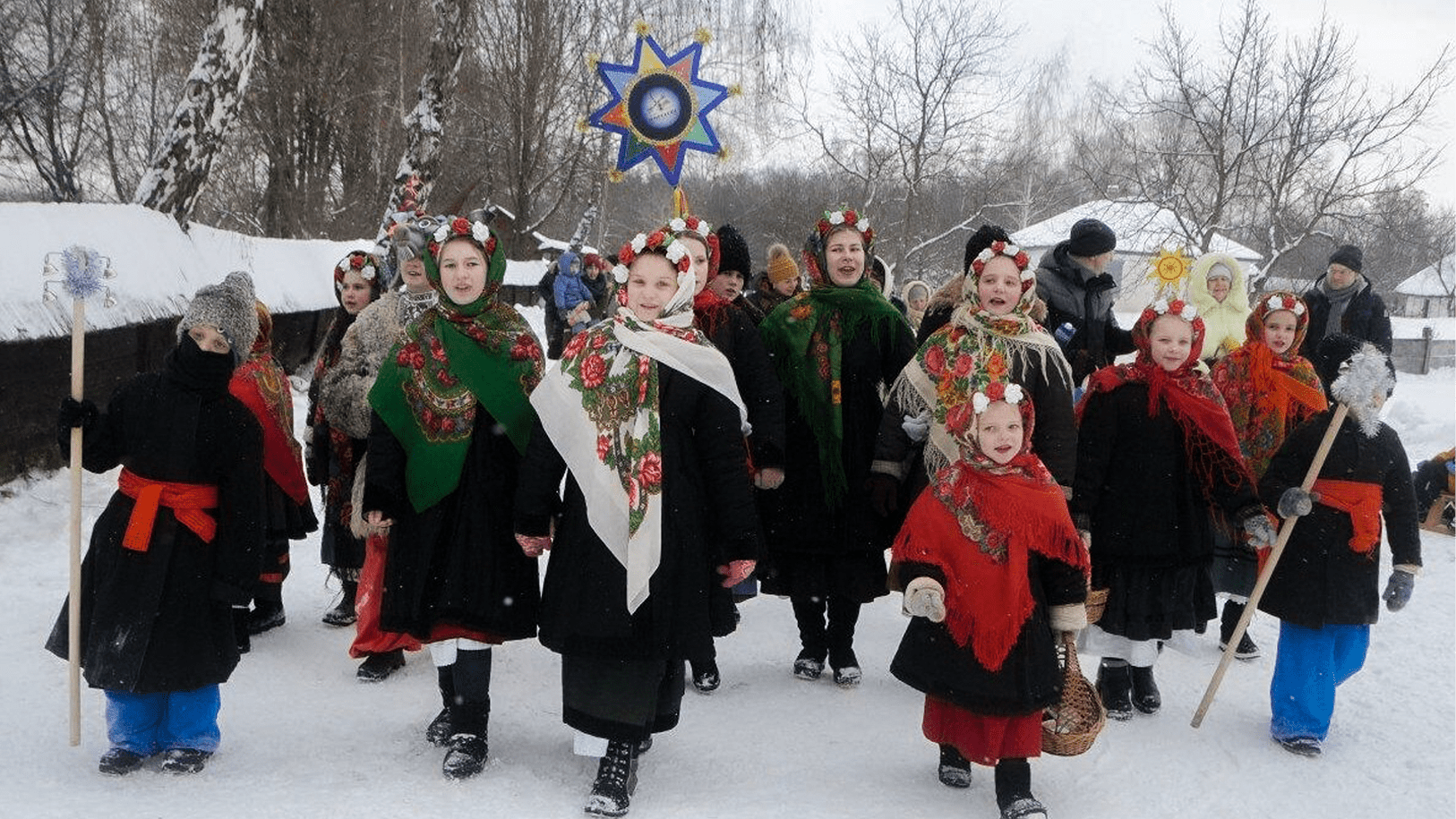
Shchedrivka
In some Ukrainian folk music rituals, theatrical elements are clearly preserved. Many such scenes are adapted to Christian symbols (influenced by the Christian era). These include, for example, Rusalka (Siren), which coincides with the feast of the Holy Trinity, and songs of Petrivchany related to the feast-day of Saints Peter and Paul. These are soon followed by the Kupala ritual cycle: men’s and women’s songs and round-dances, jumping over bonfires, burning effigies, making flower wreaths, jumping into water, divination, etc. With Vesniankas and Gagilkas, women, for the most part, invite the spring, and calls and simple songs would be heard. Ukrainian wedding rituals, Ukrainske Vesilia, which are saturated with folk music, would sometimes last up to a week.
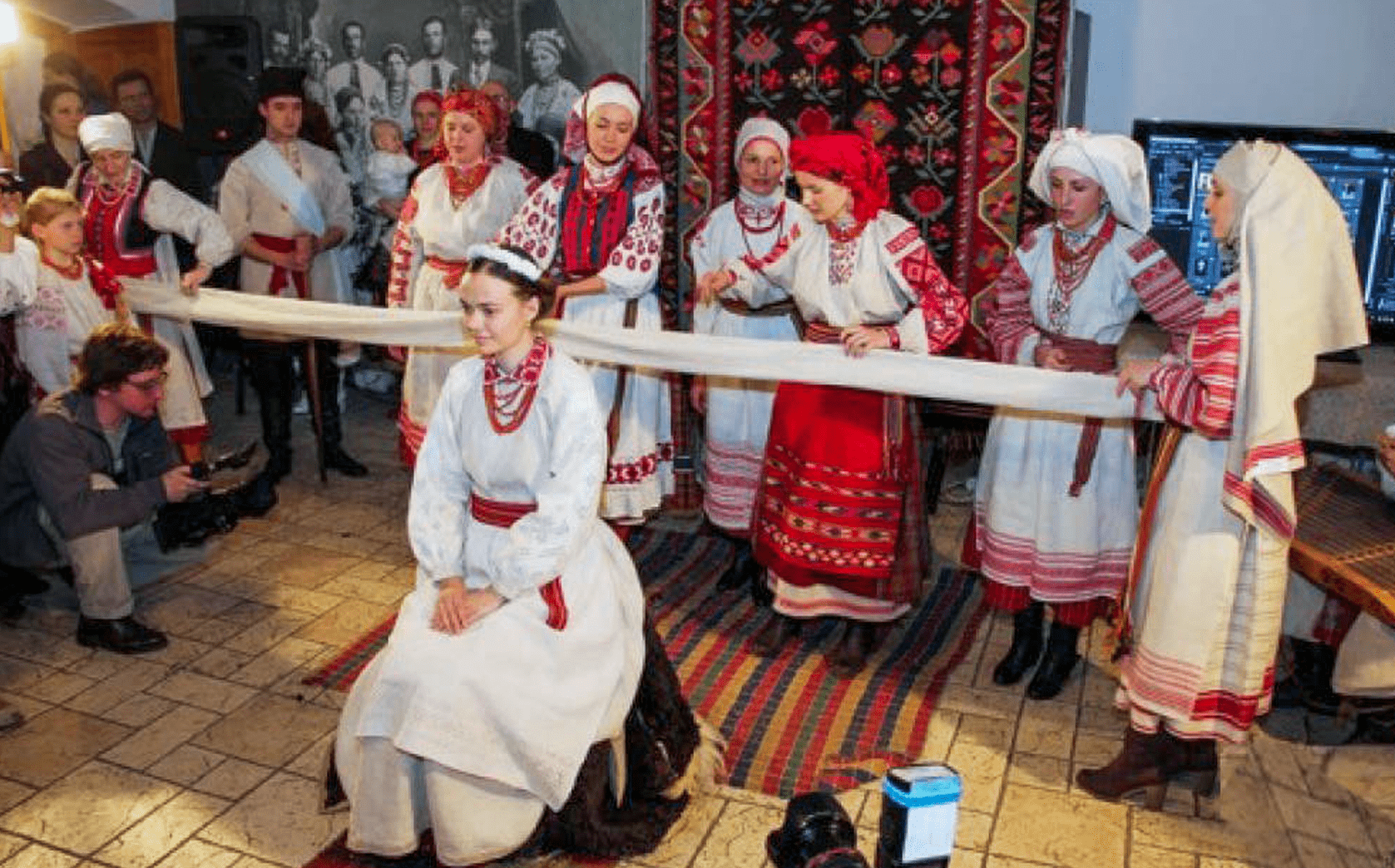
Ukrainian wedding
As is the case with other Eastern Slavs, ecclesiastical themes took root in Ukrainian folk music, especially in the sixteenth and seventeenth centuries, and hymn-style chants and psalms were introduced into the folk repertoire.
Music, a Weapon for Survival
Historical songs are very important for the national consciousness of Ukraine, particularly the duma genre, which through telling stories of heroes, depicts the struggle of the Ukrainian people against the Turks, Poles, and Russian invaders. It was mainly performed by kobzars (bandura -players) and lirnycs.
With new social and political challenges, the themes of war and patriotism developed, and the repertoire became accordingly richer. As a result, in the nineteenth century, the songs of strelets (shooters) appeared, mostly in Western Ukraine. Perhaps the best known among these is the recruiting song “Yikhav kozak za dunai” (The Cossack was traveling across the Danube). Its intonations can be found in the famous “Tij mene pidmanula”. The songs of the rebels (povstansky) were characterized by a similar motivation and represented the protest mood of the Soviet period. The expansion of German Nazism was followed by a new wave of protest music, exemplified by the nevilnitsky pisni.
|
Duma. Kobzar with his wife |
As in the music of all the nations that came out of the Soviet era, it is clear that, in addition to music that protested against the communist revolution, a large number of socialist propaganda songs also appeared in Ukraine. The fact that music is a friend for Ukrainians in the times of need, has once again manifested itself recently, after the Russian invasion of Ukraine. Ukrainians held on not only to weapons, but to their music as well, and revived old patriotic songs in a new way. A great example of this is the patriotic song from the time of World War I, “Oy, u luzi,” which, in the Internet age, became a worldwide hit overnight.
|
War and Peace: Ukrainian Singing Lyricism
Filled with the patriotic spirit, Ukrainians do not lose their humor in war, nor do they forget about other human feelings.
Solo performers, in addition to duma songs, also perform other lyrical pieces, psalms, and humorous songs. Along with such monophonic narrative historical songs, there are polyphonic singing samples as well.
Unlike in the duma and bylyna genres, in Ukrainian multi-stanza dramatic ballads the epic plot is combined with the lyrical, in which the theme of love is brought to the fore. An outstanding example of this genre is “Oy u poli drevo” (“There is a tree on the field”).
When talking about Ukrainian folk songs, special attention is often drawn to their lyrical character. Personal feelings are mainly reflected in two contexts: in an intimate, family context, on the one hand, and in social relations, on the other. Lyrical songs can be both monophonic and polyphonic. The famous Ukrainian lullaby “Oy khodit son kolo vikon” (Sleep is walking outside the window) is considered an outstanding example of a family lyrical melody. The humorous song “Ti zh mene pidmanula” (You tricked me) is also known worldwide.
In general, the range of genres of lyrical songs is wide and, in addition to military songs (such as calls for the Cossack army), it includes love songs, as well as humorous-satirical repertoire. Interesting examples of Cossack songs are the lyric song “Oy chiy kin stoyt?” (Whose horse is standing here?) and the expedition song “Oy na hori ta y zhentsi zhnut,” (On the mountain, the reapers are reaping). Among workers, there were also collective (co-working) songs: chumatskye, songs of merchants and traveling traders, batratskye, songs of artisans, and zarobitchansky, songs of hired laborers. Some of them date back several centuries and feature the motifs of urban marches or dances (e.g., the Polish mazurka).
The relatively late Ukrainian oral-and-written folk music culture is lyrical in nature. It acquired its distinct style in the eighteenth century and originated in upper-class circles. The influence of European (Polish) intonations is obvious. In this regard, the song-romance genre is also relevant, a later addition to which includes songs set to the verses of the great Ukrainian poet, Taras Shevchenko.
How do Ukrainians Make Music?
Men’s and women’s repertoire is almost equal in Ukraine. There are many mixed choirs. Men’s choir songs are rhythmically more pronounced, while women’s songs are characterized by more lyricism, serenity, and are often in two parts. There are more ritual songs in the women's repertoire than in men’s. Ukrainian choral songs usually start with a solo.
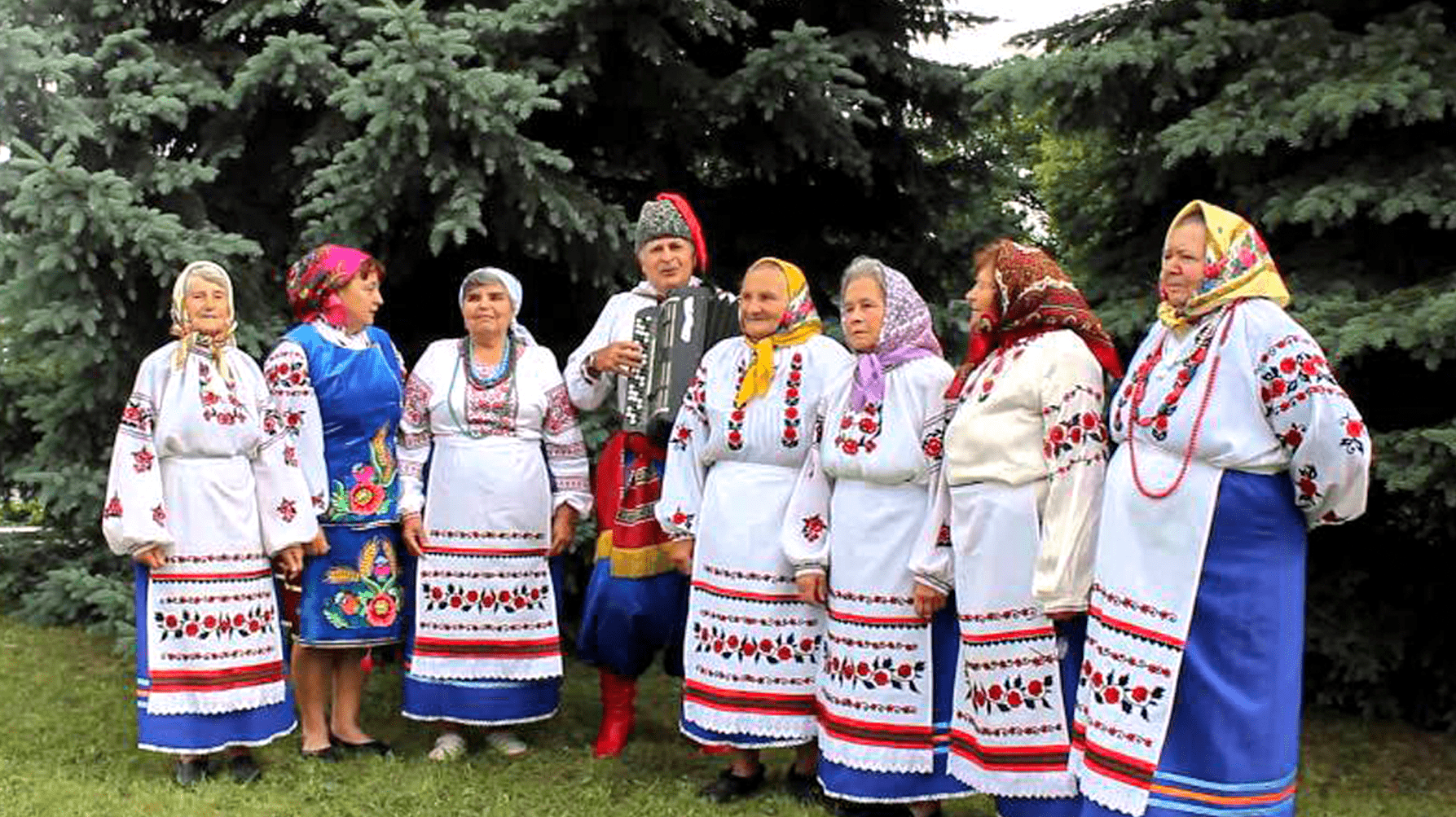
Ukrainian singers
Ukrainian instrumental music is very diverse. Ukrainians often accompany songs on various instruments. Along with their own, they play common Slavic instruments like the bubna (tambourine), rog (horn/bugle), floyara (a Western Slavic overtone flute, which was sometimes played by Hutsuls during mourning), tsytra (zither), litavra (kettle-drum), and baraban (drum), along with borrowed instruments like the skripka (violin).
In general, Ukrainians have an impressive gallery of various types and styles of instruments. Among the wind instruments, flutes such as sopilka and telenka, bagpipes like the duda (volynka), and a one-tone alpine horn for signalling called the trembita stand out.
Among string instruments it is worth noting the long-necked kobza and bandura (note the similarity to the Georgian panduri or Greek pandora), zither-type gusli, cimbalom, and the cello-like basolia. There are also idiophones (simple, untuned instruments), such as drymba (a.k.a. vargan/jaw harp/Jew’s harp, a a thin piece of metal played near the mouth), swistuntsi (whistles made of clay), etc. In addition to solo performance and singing accompaniment, instrumental trio music of various compositions, known as troista muzika, is also quite widespread.
|
Drymba |
Svistulka |
The works of itinerant musicians—lirnyks, who would play a hand-cranked hurdy-gurdy-type instrument called lira—were quite popular in Ukraine. Blind lirnyks mainly performed historical, religious (psalms), and lyrical ballads.
Instrumental music, of course, accompanies energetic Ukrainian dances (muzyka do tantsiu), such as the hopak, polka, kozachok, kolomyika, polechka, waltz, etc. Hopak, the dance of the Zaporizhzhian Cossacks, is distinguished by acrobatic feats and especially popular. Kolomiyka is mostly accompanied by the Ukrainian version of the Slavic chastushki, a type of humorous verse. Ukrainian tanok round-dances were mainly performed by women. These dances can be circle-dances, line-dances (mainly with two sides), and chain-dances (following a leader in a kind of serpentine movement).
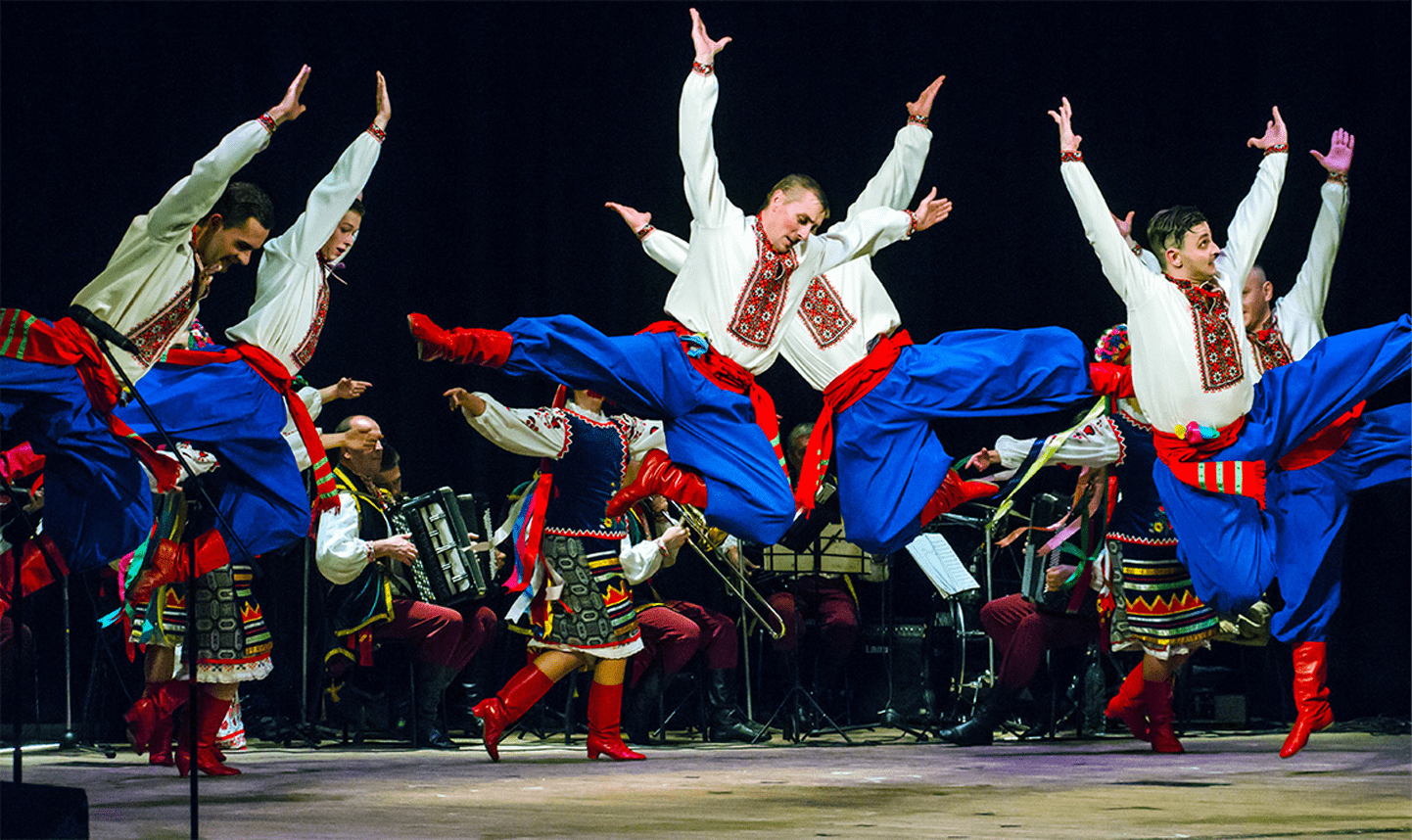
Hopak
Ukrainian ethno-music is also present in modern popular music, with examples such as the pop group Viag-Ra, and rock groups like Gaidamaki (Cossack rock), VV (“Vopli Vidopliassova,” neo-ethnic rock), and Dakhabrakha (ethnochaos).
And yet: what is it about Ukrainian songs that most fascinates the listener? Perhaps it is the historical sadness of a long-suffering nation, the beauty of nature, people, and the Ukrainian language, mixed with heartfelt melodies. It is because of these melodies, the spirit of music, that the majority of Ukrainians still listen to and sing indigenous tunes with enviable love.
Cover image: Kobzar.

